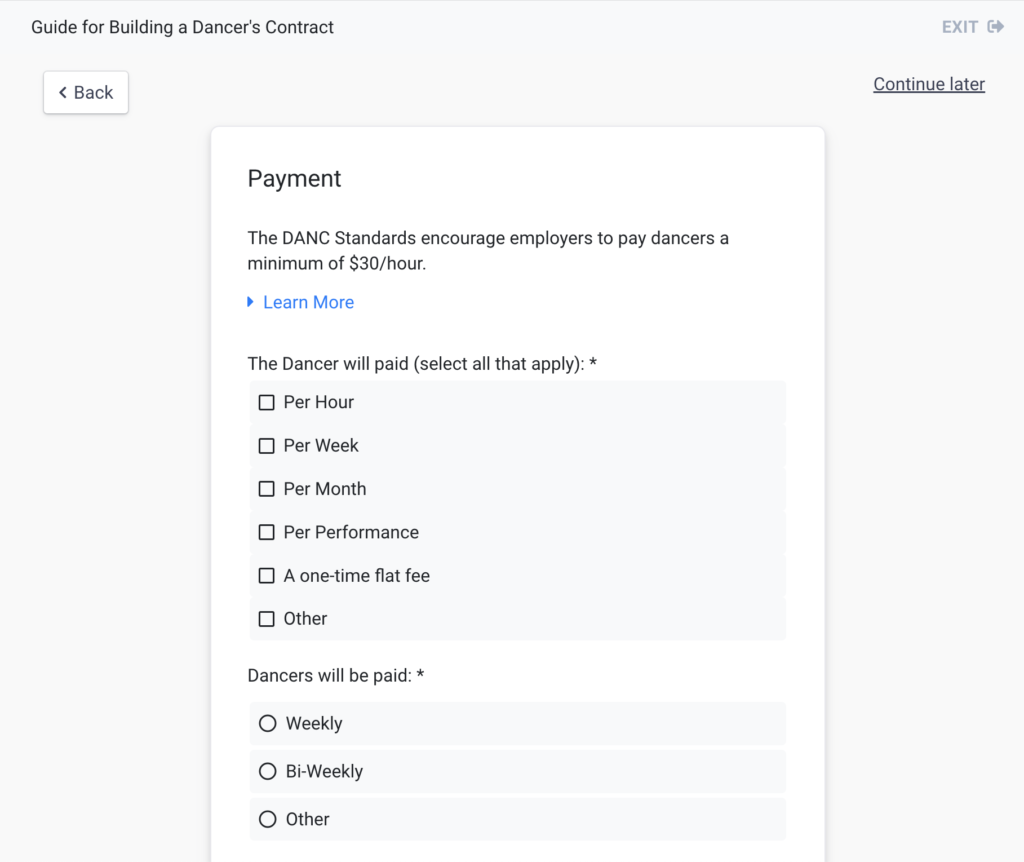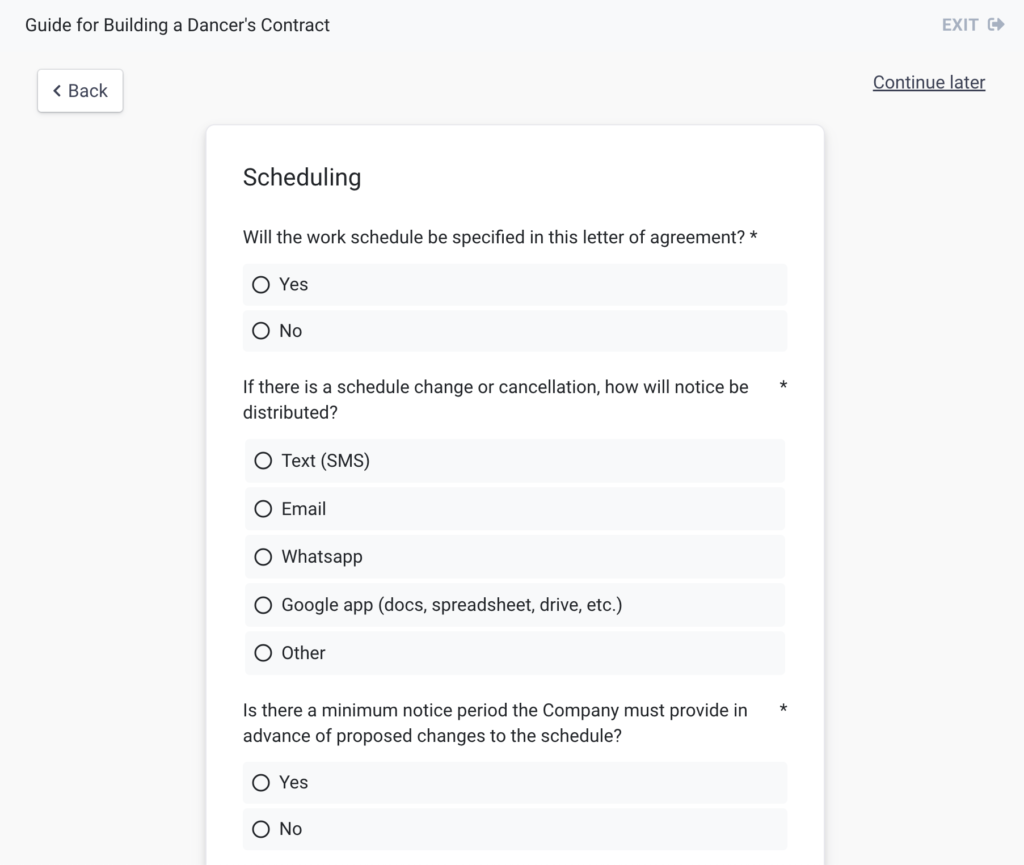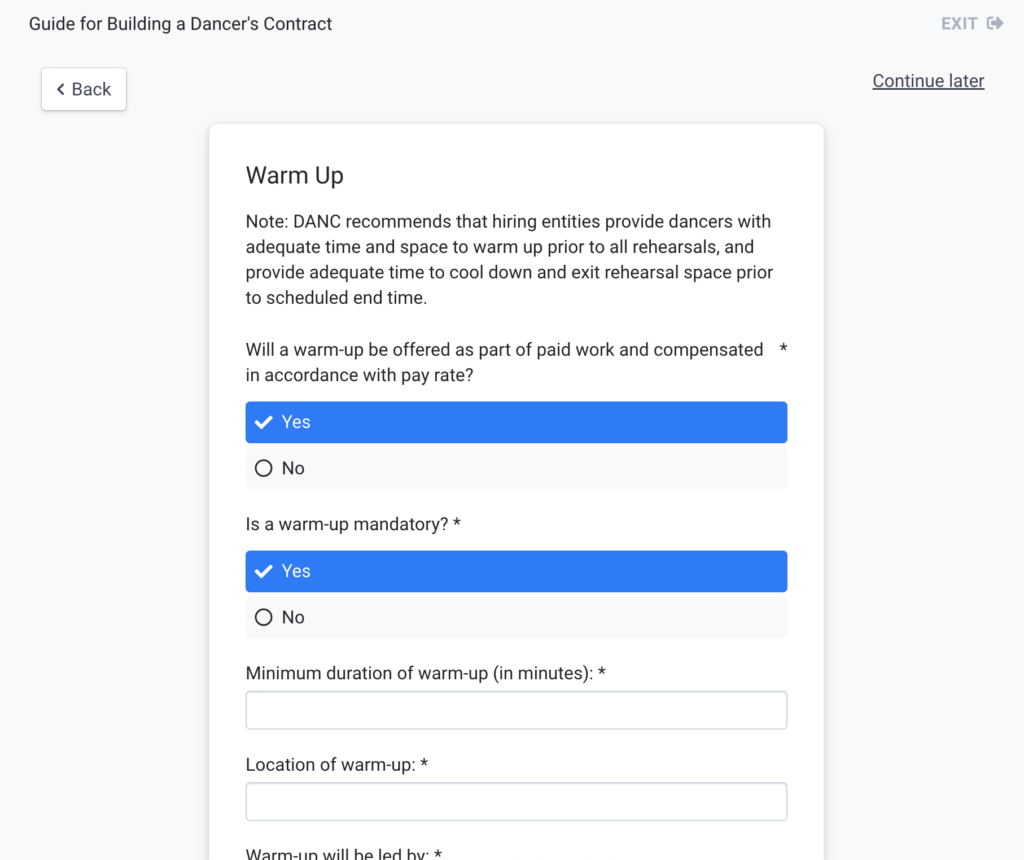When a person or entity hires a dancer without offering them a contract, the lack of clarity around expectations can lead to confusion and tension in the workplace. At their worst, absent or ambiguous contracts can result in a workplace where dancers feel pressured to do anything their employer asks at any time, for fear of being penalized.
DANC has been working to rectify this problem for the last several years. DANC’s “Guide for Building a Dancer’s Contract” is a tool designed to ensure that all areas pertinent to employment are agreed upon explicitly between the dancer and the hiring entity. It is a unique tool crafted by a multitude of DANC volunteers and it is a constant work in progress.
The creation of this contract-building tool began in 2020 during the early days of the pandemic. Dozens of DANC volunteers from across the country met regularly via video chat to draft language that they wished would be included in a dancer’s contract. Four focus groups met to strategize around different topics: Equity, Wages, Benefits, and Working Conditions. In the following year, DANC volunteers combined the language and ideas generated by these groups into a hefty menu of options that included every possible sentence or clause that might show up in a dancer’s contract. We quickly learned that our attempt to think of every possible employment scenario was presumptuous and overzealous, but it still led us to a fruitful outcome. We generated a beautiful, messy, 45-page document covered in suggestions and comments by dozens of DANC members.
Over the past year, DANC volunteers have been transforming the promising content of this cluttered document into a more accessible and functional contract-building tool. We’re creating an online questionnaire that addresses conditions of a dancer’s employment. Once a user completes the questionnaire, a customized document is generated based on the answers provided. This customized document can be used as a starting point for a contract between dancer and hiring entity, and it’s editable, so anything can be changed or removed.
This online tool has yet to be released publicly, and it is currently being tested and improved by volunteer DANC members. We know that the contract-builder will be a perpetual work in progress, but we’re getting close to releasing our first version for broader use. The images and video below are from a preliminary draft.
If you’d like to stay up to date on the release:
- Become a DANC member. Anyone who identifies as a dancer is welcome to join by filling out a very simple form.
- Subscribe to our newsletter.
- Follow us on Instagram.




